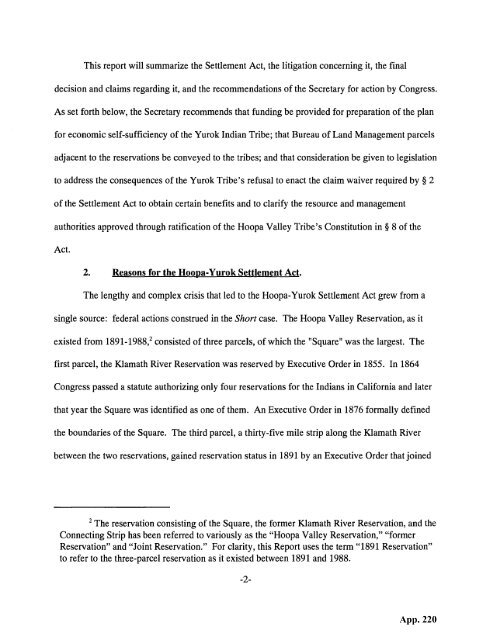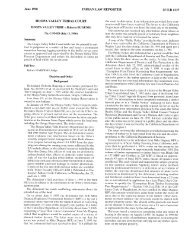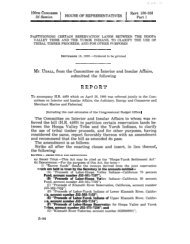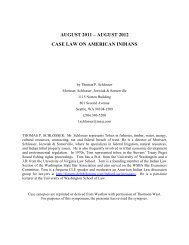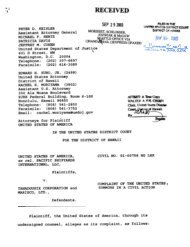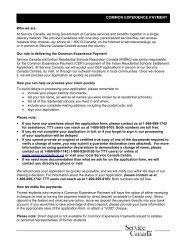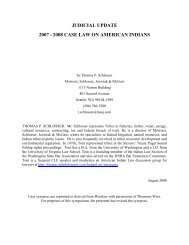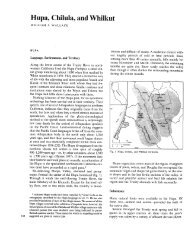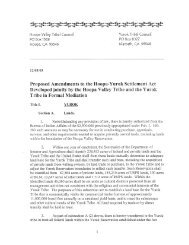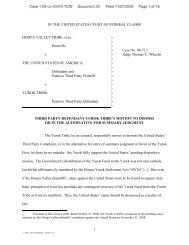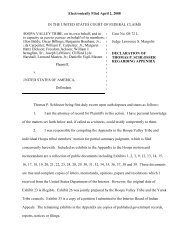Hoopa appendix supporting summary judgment - Schlosser Law Files
Hoopa appendix supporting summary judgment - Schlosser Law Files
Hoopa appendix supporting summary judgment - Schlosser Law Files
Create successful ePaper yourself
Turn your PDF publications into a flip-book with our unique Google optimized e-Paper software.
This report will summarize the Settlement Act, the litigation concerning it, the final<br />
decision and claims regarding it, and the recommendations of the Secretary for action by Congress.<br />
As set forth below, the Secretary recommends that funding be provided for preparation of the plan<br />
for economic self-sufficiency of the Yurok Indian Tribe; that Bureau of Land Management parcels<br />
adjacent to the reservations be conveyed to the tribes; and that consideration be given to legislation<br />
to address the consequences of the Yurok Tribe’s refusal to enact the claim waiver required by § 2<br />
of the Settlement Act to obtain certain benefits and to clarify the resource and management<br />
authorities approved through ratification of the <strong>Hoopa</strong> Valley Tribe’s Constitution in § 8 of the<br />
Act.<br />
2. Reasons for the <strong>Hoopa</strong>-Yurok Settlement Act.<br />
The lengthy and complex crisis that led to the <strong>Hoopa</strong>-Yurok Settlement Act grew from a<br />
single source: federal actions construed in the Short case. The <strong>Hoopa</strong> Valley Reservation, as it<br />
existed from 1891~1988,2consisted of three parcels, of which the “Square” was the largest. The<br />
first parcel, the Kiamath River Reservation was reserved by Executive Order in 1855. In 1864<br />
Congress passed a statute authorizing only fourreservations for the Indians in California and later<br />
that year the Square was identified as one of them. An Executive Order in 1876 formally defined<br />
the boundaries of the Square. The third parcel, a thirty-five mile strip along the Kiamath River<br />
between the two reservations, gained reservation status in 1891 by an Executive Order that joined<br />
2 The reservation consisting of the Square, the former Kiamath River Reservation, and the<br />
Connecting Strip has been referred to variously as the “<strong>Hoopa</strong> Valley Reservation,” “former<br />
Reservation” and “Joint Reservation.” For clarity, this Report uses the term “1891 Reservation”<br />
to refer to the three-parcel reservation as it existed between 1891 and 1988.<br />
-2-


